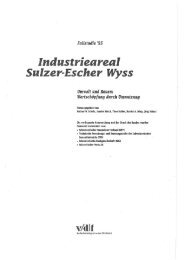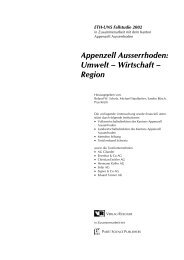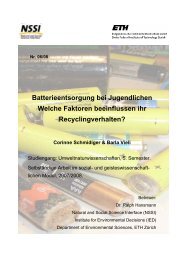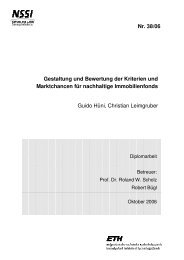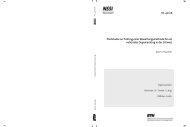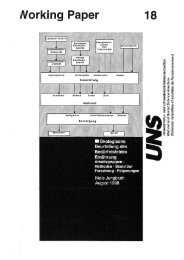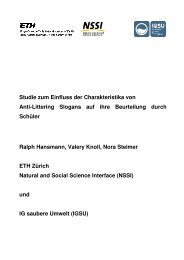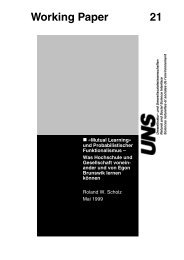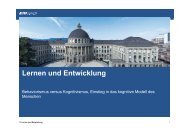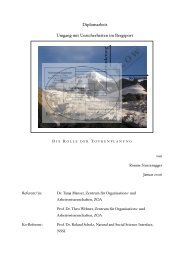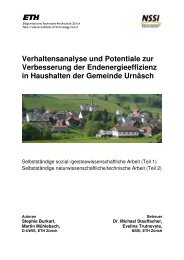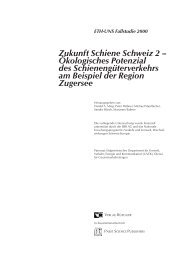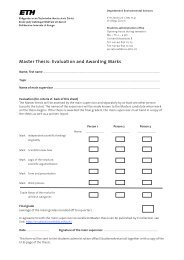Non-road fuel consumption and pollutant emissions ... - BAFU - CH
Non-road fuel consumption and pollutant emissions ... - BAFU - CH
Non-road fuel consumption and pollutant emissions ... - BAFU - CH
Create successful ePaper yourself
Turn your PDF publications into a flip-book with our unique Google optimized e-Paper software.
<strong>Non</strong>-<strong>road</strong> <strong>fuel</strong> <strong>consumption</strong> <strong>and</strong> <strong>pollutant</strong> <strong>emissions</strong> FOEN 2008 20<br />
4.2.3 Inventory model<br />
For the period concerned, age distribution <strong>and</strong> inventory data can be used as the basis<br />
for calculating segment-specific inventory models for the various machine <strong>and</strong> appliance<br />
categories. In the inventory model, the machines <strong>and</strong> appliances for each segment<br />
are depicted by age or year of manufacture.<br />
Fig. 4 > Inventory model based on the example of <strong>road</strong> finishing machines (construction machinery)<br />
Distribution of inventory by year of manufacture in a given reference year. The inventory model<br />
was calculated in accordance with the data from the new non-<strong>road</strong> database in 5-year intervals.<br />
This explains the angular nature of the curves.<br />
Inventory<br />
500<br />
400<br />
300<br />
200<br />
100<br />
0<br />
1980 1985 1990 1995 2000 2005 2010 2015 2020<br />
Year of manufacture<br />
1967 1968 1969 1970 1971 1972 1973 1974 1975 1976 1977 1978 1979 1980<br />
1981 1982 1983 1984 1985 1986 1987 1988 1989 1990 1991 1992 1993 1994<br />
1995 1996 1997 1998 1999 2000 2001 2002 2003 2004 2005 2006 2007 2008<br />
2009 2010 2011 2012 2013 2014 2015 2016 2017 2018 2019 2020<br />
4.2.4 Operating hours<br />
For each machine type, the number of operating hours was entered specific to the<br />
corresponding engine-power class. In addition, assumptions were made regarding the<br />
development of operating hours of the machines <strong>and</strong> appliances in each engine-power<br />
class over the period under observation. For this purpose it was assumed that the useful<br />
life of a machine increases in proportion to its engine power. This assumption was<br />
based on information provided in the questionnaires, the findings of groups of experts<br />
(A15) <strong>and</strong> information obtained from existing literature (IFEU 1999, SBV 2004).



